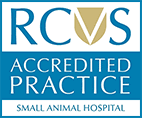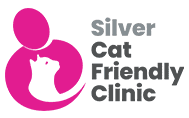Rabbits are amazing animals and this means that they are still a very popular pet for both adults and children to have. They are fascinating animals but are quite often misunderstood, we have tried to answer some of the most common misconceptions below….
- Rabbits are the masters of sight and hearing, they are able to pinpoint the exact location of sounds. They can turn their ears to an impressive 180 degrees, and if this wasn’t enough they almost have 360 degree vision.
- Rabbits are social animals and are at their happiest in the company of another rabbit. The recommended combination for rabbit couples is a neutered male and a neutered female. Rabbits who live alone can become sad and depressed.
- Despite belief in the past it is now recommended by experts that rabbits and guinea pigs are not paired together and are kept separated. The reasoning behind this is that both animals need different diets, use different communication techniques, and can cause injury to one another (rabbits in particular being larger.)
- There are many rabbits that do not like to be picked up, this is thought to be part of their survival technique. Although domesticated rabbits come in all types of breeds and colours nowadays they still have a similar perspective of life as a wild rabbit – being a prey species. Most rabbits will be in a constant state of alert and it is thought when they are scooped up by owners’ hands they may feel they are being taken by a predator causing them to nip.
- Rabbits have various forms of communication including binkying – this is the happy hopping in the air, kicking of the feet and twisting of the body which is a sign of happiness! Rabbits also communicate by making slight movements in their muscles, e.g. changing body position and clenching facial muscles to show to others how they are feeling. These signs are so subtle that they can be difficult to notice, this is one of the reasons they are so easily misunderstood – particularly with young children.
- A rabbit’s diet should be made up of 90% hay or fresh grass an endless supply of this should be available in order to aid and maintain a healthy diet and dental health. Root vegetables such as carrots are not a natural part of a rabbit’s diet and are high in sugar so should only be given occasionally and in small portions. Please don’t feed your rabbits’ freshly cut grass as this can be toxic.
- Most of our rabbit’s will suffer from dental problems including overgrown teeth and abscesses. The majority of overgrown teeth can be avoided by making sure rabbits’ have access to hay or fresh grass. The constant chewing on this food will help naturally keep their teeth shorted and healthier.
- It is paramount that even from a young age bunnies have the correct amount of space to correctly grow in. Bunnies that don’t have enough space growing up are more likely to break bones as they don’t get the opportunity to build their bodies correctly.








